Dig Timeline
Catch up on all the action from site, as it happens
- Overview
- Key Dates
- Diary
- Finds
- Photos
- Videos
Oct 4 2017 - 12:00 PM
Want to see what we found? We’ve already uploaded all of our finds onto Digital Dig Team and you can see them all just by clicking here.
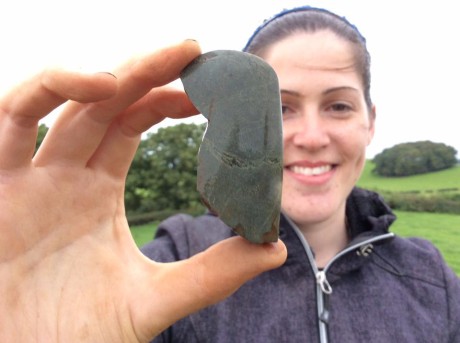
Sep 29 2017 - 9:00 PM
Site Diary: The Discovery That Made Our Hearts Skip A Beat
So this is it. THIS is the discovery that made our hearts skip a beat. It’s a beautiful Neolithic polished stone axe. Specifically, it’s a Langdale axe – a type of axe produced in…
Sep 30 2016 - 5:31 PM
New Hoard – rare unlooped socketed axe
Extremely rare cast copper alloy unlooped socketed axe, dating 1150 – 750BC.The cutting edge has a pronounce flare out toward each of the blade tips which appear to have been deliberately recessed.
Mar 15 2016 - 7:03 AM
I don’t do this hobby for money, it’s about learning from the past. It’s part of our heritage and the biggest thing of value from this is knowledge
Detectorist Matthew Hepworth
Oct 3 2016 - 6:35 PM
Sep 23 2017 - 3:30 PM
We’re livestreaming from the top of the Bronze Age burial mound. The delicate process of preparing the newly discovered urn to be lifted out of the ground is underway. It’s been buried for over 3,000 years, and getting it out isn’t going to be easy.
Stonehenge is Built
Stonehenge, one of the world’s most famous prehistoric monuments, is erected at Amesbury, Wiltshire. Though it’s exact purpose remains unknown, the landscape becomes a site for ritualistic activity for many thousands of years.
The Morecambe Barrow is Constructed
Evidence suggests that the monument in Morecambe is a Late Neolithic to Early Bronze Age round barrow, or burial mound; continually used and developed right up until the Late Bronze Age. Around this time, the greatest concentration of round barrows in Britain also begins to develop in the landscape surrounding Stonehenge.
Beaker Burials
Barrows are most commonly associated with a group known as the Beaker People, who buried their dead with a distinctive ‘beaker’ style of pottery. The presence of Beaker pottery in the North West of Britain is incredibly rare, and only time will tell whether this barrow will deliver any Beaker remains.
End of an Era
Around this time activity at the barrow falls into a decline and slowly it’s forgotten. It lays untouched and hidden in the landscape for over 2,800 years…
Roman Britain
The Romans conquer Britain in AD43, and slowly, the burial rites of the native people changed from barrow burials to wide scale inhumation cemeteries. Nearby in Lancaster, a Roman fort is constructed on a commanding position overlooking the River Lune, and later becomes Lancaster Castle.
Medieval Lancaster
The town of Lancaster is first mentioned in the Doomsday Book of AD1086, having developed around the Roman fort and later Norman castle. The Middle Ages are a turbulent time for the town, it’s raided twice by the Scots in the AD1300s, and suffers greatly at the hands of the Black Death in AD1349, which kills half the town’s population.
War of the Roses
In AD1455 civil war breaks out between supporters of the Houses of Lancaster and York, who both stake a claim to the English throne. The Wars culminate in the Battle of Bosworth in AD1485, when Henry Tudor defeats the last Yorkist claimant, Richard III, and ascends to the throne.
Pendle Witch Trials
The trials of the Pendle witches are amongst the most famous witch trials in English history. Twelve people are accused and convicted of murder by witchcraft at Lancaster Castle, and sentenced to death at the gallows.
Industrial Revolution
Britain undergoes a period of great change and advancement, with scientific and technological innovations driving the country’s industry and economy to new heights. With the introduction of the steam engine, transport becomes easier, railways expand, and new towns are established.
Morecambe is Born
In 1846, the Morecambe Harbour and Railway Company is formed to build a harbour on Morecambe Bay. A settlement begins to build up around the harbour, and the name ‘Morecambe’ is officially adopted in 1899.
A Seaside Resort
As Morecambe grows and the railway develops, visitors begin to flock to the town and it soon becomes a popular seaside resort. The 1930s are particularly affluent years, seeing the development of the promenade with pier pavilions, cinemas, and shops.
A Town in Decline
Morecambe’s booming tourism is sadly not to last. With the introduction of package holidays in the 1950s and 1960s, holiday makers begin to head further afield and many of Morecambe’s attractions are forced to close. The town is in need of a fresh start.
A Surprise Find
Metal detectorists surveying a hill above Morecambe Bay come across a small Bronze Age hoard, consisting of a bronze tanged chisel and knife blade. The finds are extremely uncommon in the North West of England, and their presence suggests the possibility that there’s an undisturbed barrow hidden nearby.
The Barrow Rediscovered
Archaeologists from the Portable Antiquities Scheme and University of Central Lancashire carry out a small excavation on the summit of the hill and confirm the presence of the barrow. They reveal a circular stone feature containing cremated bone, along with traces of burnt flint and a bronze knife fragment.
DigVentures' Investigation Begins!
DigVentures lead a two-week scientific investigation of the barrow in July 2016, peeling back the layers to discover what lies within. A pop-up museum also opens on the promenade, to draw in the local community and encourage tourists to rediscover the iconic seaside town.

Sep 29 2017 - 9:00 PM
Site Diary: The Discovery That Made Our Hearts Skip A Beat
So this is it. THIS is the discovery that made our hearts skip a beat. It’s a beautiful Neolithic polished stone axe. Specifically, it’s a Langdale axe – a type of axe produced in…
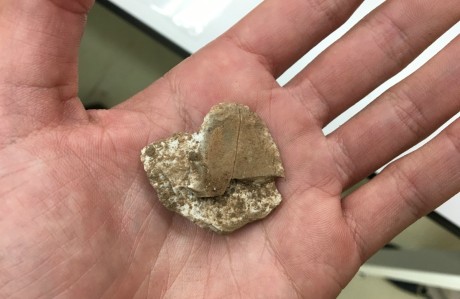
Feb 2 2017 - 12:00 PM
From The Lab: The Curious Case Of The Burnt Stone
This flint tool was one of the only artefacts found inside the Morecambe burial urn. But was it from the same cremation as the body? Careful examination of the stone tool found inside the…
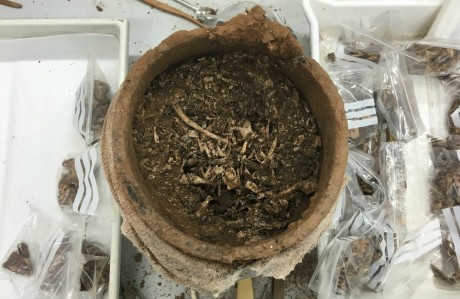
Jan 19 2017 - 12:00 PM
From The Lab: What We Found Inside The Morecambe Urn
The Morecambe urn is a rare discovery, full to the brim with an unusual quantity of extraordinarily well-preserved human bone. Here’s what we now know about who they belonged to, says osteoarchaeologist Sam Walsh….
Sep 30 2016 - 5:31 PM
New Hoard – rare unlooped socketed axe
Extremely rare cast copper alloy unlooped socketed axe, dating 1150 – 750BC.The cutting edge has a pronounce flare out toward each of the blade tips which appear to have been deliberately recessed.
Sep 30 2016 - 5:21 PM
Lancashire’s new hoard…
This is the first 3D digital model of a Bronze Age hoard in situ to have been made publicly available – including spearheads, axes, two pennanular wrist rings, complete arm rings, a chisel and a pair of horse harness ornaments – discovered by a metal detectorist, near Morecambe Bay, and excavated by DigVentures as pat of the HLF-funded ‘Barrowed Time’ project.
Jul 5 2016 - 12:53 PM
Sep 23 2017 - 3:30 PM
We’re livestreaming from the top of the Bronze Age burial mound. The delicate process of preparing the newly discovered urn to be lifted out of the ground is underway. It’s been buried for over 3,000 years, and getting it out isn’t going to be easy.
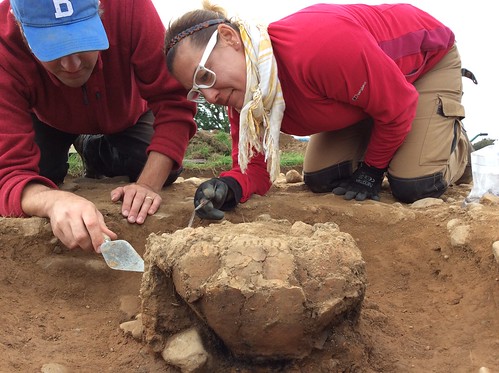
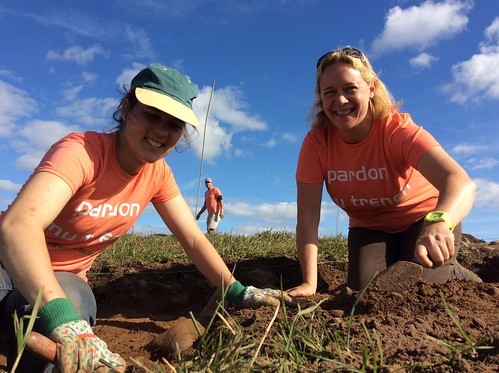
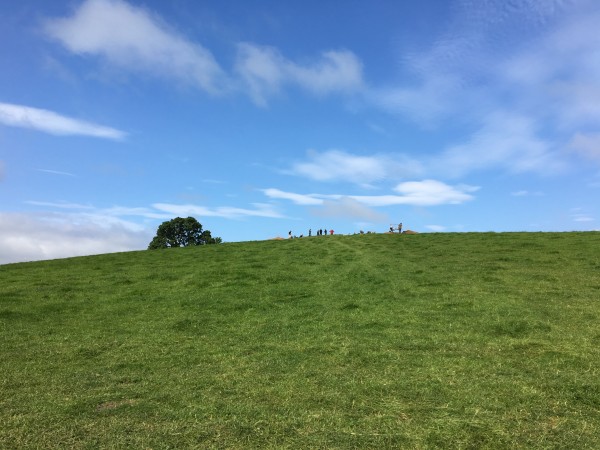
Oct 3 2016 - 6:35 PM
Oct 3 2016 - 2:13 PM
Oct 3 2016 - 11:46 AM